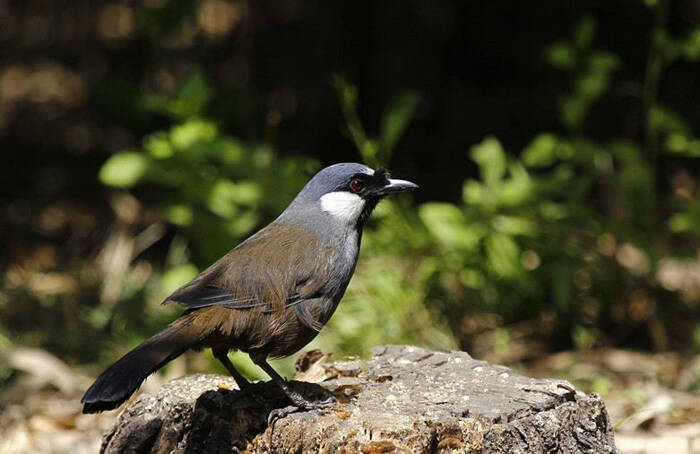Perisoreus internigrans
IUCN
LCBasic Information
Scientific classification
- name:Perisoreus internigrans
- Scientific Name:Perisoreus internigrans,Black-hcoled Jay
- Outline:Songbird
- Family:Passeriformes Corvidae Crow
Vital signs
- length:28-31cm
- Weight:89-108g
- lifetime:10-20years
Feature
Similar in shape to a crow but smaller, endemic to China
Distribution and Habitat
Distributed in Asia north of the Himalayas, Hengduan Mountains, Minshan Mountains, Qinling Mountains, and Huaihe River. Endemic to China. Distributed in Zhuoni, Gansu, Banma in southeastern Qinghai, Songpan, Maerkang, Derge in Sichuan, and Jiangda in Tibet.
Inhabits subalpine coniferous forests at an altitude of 3050-4300 meters. Active in relatively open areas of mountain coniferous forests.
Appearance
The black-headed crow is about 30 centimeters long. Male adult bird: The forehead, top of the head, sides of the head, sides of the neck, the front of the eyes, ear feathers and nose whiskers are all black; the color of the newly collected specimen is darker from the beak to the upper part of the neck with less obvious semi-ring-shaped spots; the shoulders, The back, waist and tail coverts are dark brown with blue or black gray with brown. The longest tail coverts are brown, the wing feathers are dark brown, and the feather rachis is black (Jiang Da collected the primary coverts on one side of a male bird No. 1 One feather is pure white, with a white edge on the other side; a male bird collected from Qinghai Zema has one primary covert that is white on one side and two on the other side.) The tail feathers are dark brown, with hidden spots on the central tail feathers, and no hidden spots on the outer tail feathers, and the spots become smaller toward the outside. The chin and throat a
Details
Black-headed Jay, no subspecies.

Black-headed Jay usually moves alone or in pairs. When they move in pairs, they fly in a line in the woods, one in front of the other, not far from each other, and occasionally chirp to respond to each other. The chirping sounds like "ga-a, ga-a", with the first syllable being heavy and the second syllable being lighter. When flying in the woods, they usually fly in a straight line. Each flight distance is not far, and when they are startled, they fly far away.
The breeding season of Black-headed Jooks is from May to July. The nest is built on the branches at the top of the tree, 5-20 meters above the ground. The nest is mainly made of dead branches, with soft materials such as dead grass, plant fiber, bark, grass roots, hair, moss, feathers, etc. inside, and the nest is bowl-shaped. Nesting begins in March and eggs begin to be laid in mid-to-late April, with 2-4 eggs per nest. The eggs are sky blue or dark blue-green, with brown and gray-brown spots, especially denser at the blunt end. The male and female birds take turns to incubate the eggs, and the incubation period is 18±1 days. The chicks are late-maturing and are fed by both male and female parents. The nesting period is 26-30 days.
Listed in the "Red List of Endangered Species of the World Conservation Union" (IUCN) 2016 ver 3.1-Vulnerable (VU).
Listed in the "National List of Terrestrial Wildlife with Important Economic and Scientific Research Value" (item 417) issued by the State Forestry Administration of China on August 1, 2000.
Listed in the first level of China's "National Key Protected Wildlife List" (February 5, 2021).
Protect wildlife and eliminate game.
Maintaining ecological balance is everyone's responsibility!








